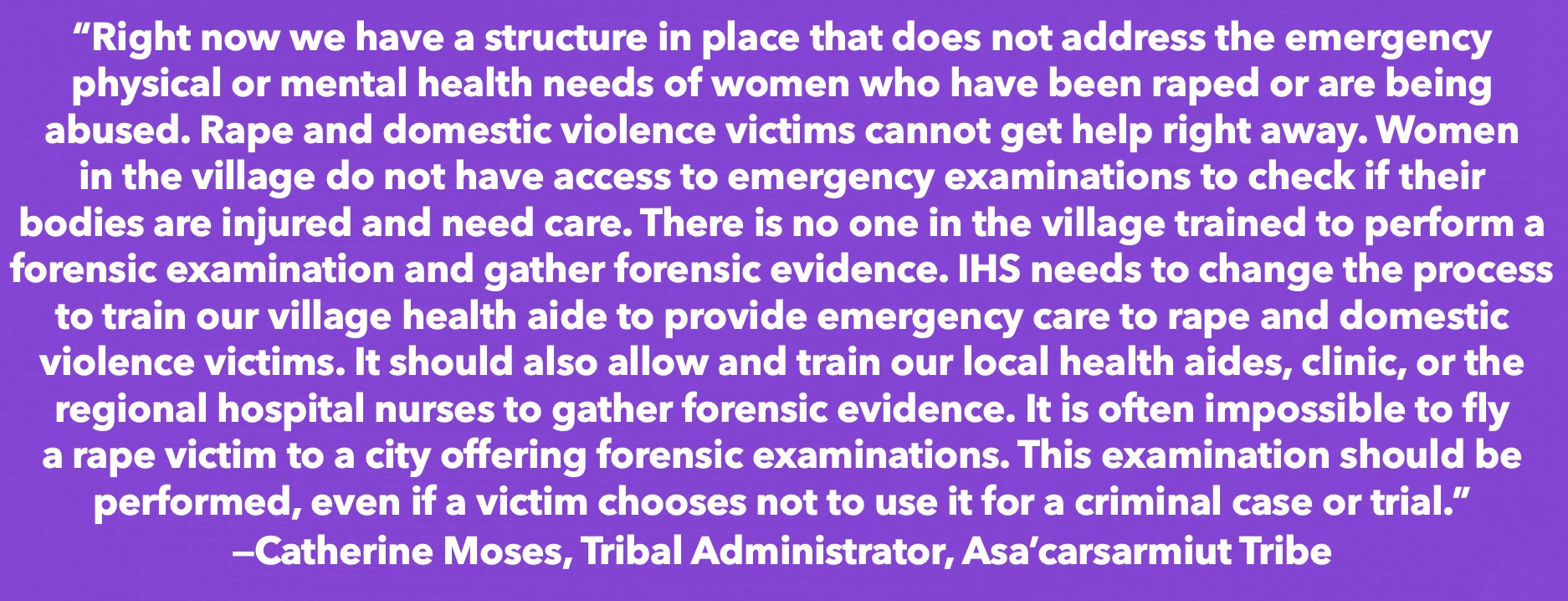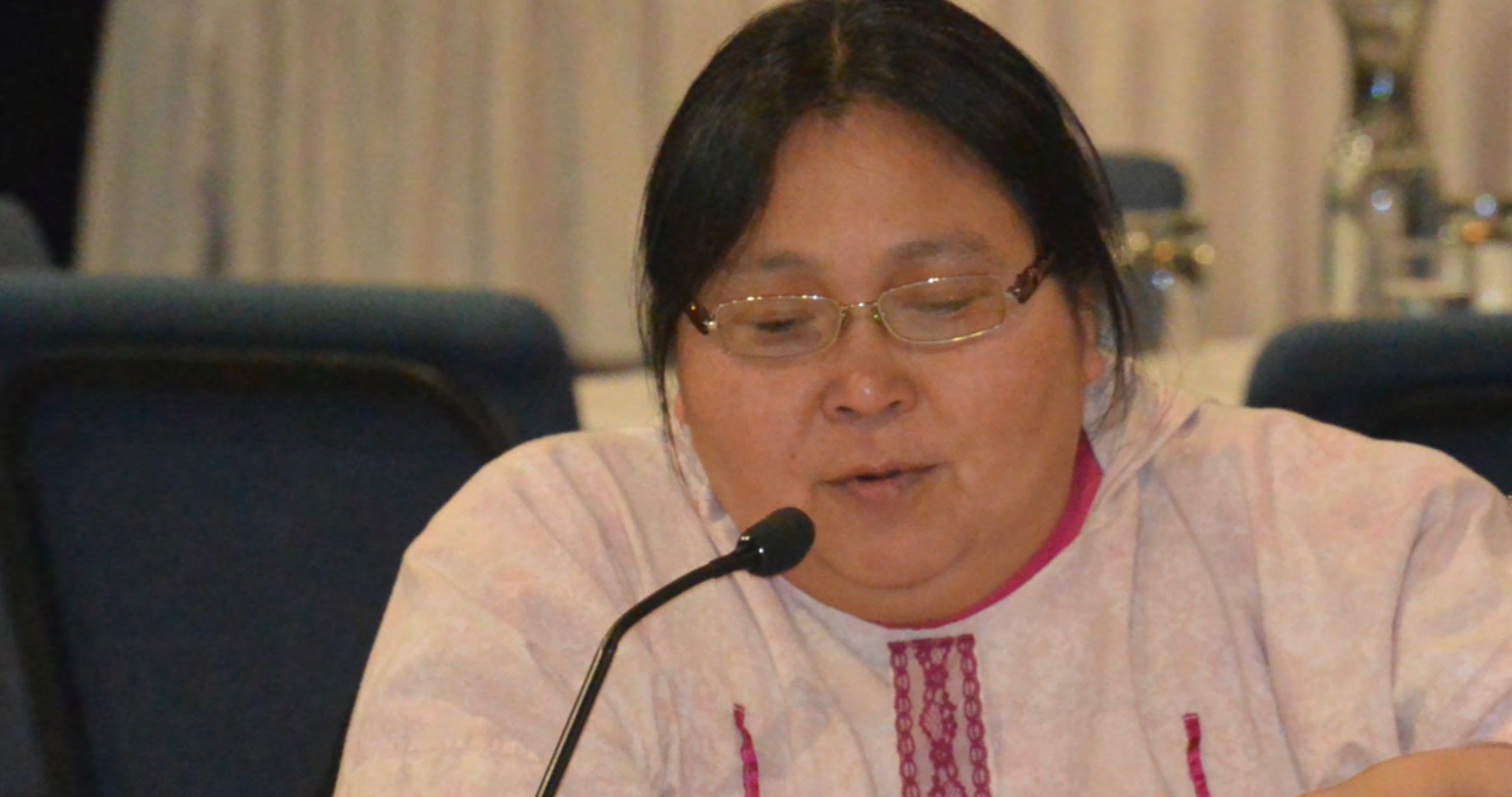National Congress of American Indians Task Force on Violence Against Women: Overview of Priority Issues 2016 Annual Consultation on Violence Against Women Issues
The Task Force was formed in 2003 and represents a national movement of tribal members and organizations dedicated to the mission of enhancing the safety of American Indian and Alaska Native women. Since the first annual VAWA consultation in 2006, members of the Task Force have participated in numerous formal consultations, informal dialogues, conference calls, meetings, and congressional hearings on the subject of violence against women. The following issues are only a partial list of those included in the Task Force summary document discussed during the tribal leaders caucus.
The 2016 tribal leaders briefing was well-attended with representatives from across Indian tribes. Task Force Co-Chairs Terri Henry and Juana Majel Dixon facilitated the caucus. Virginia Davis, NCAI staff attorney, and NIWRC consultant Jacqueline Agtuca prepared the summary of priority issues briefing document.
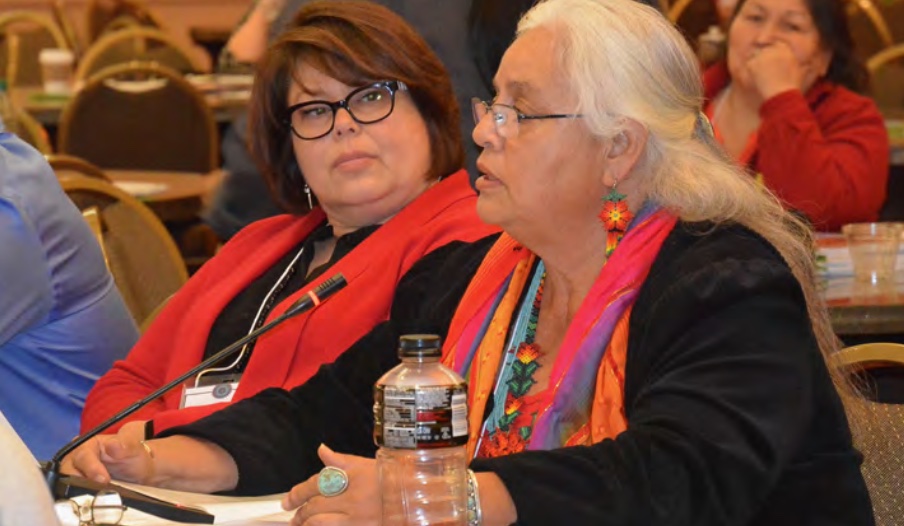
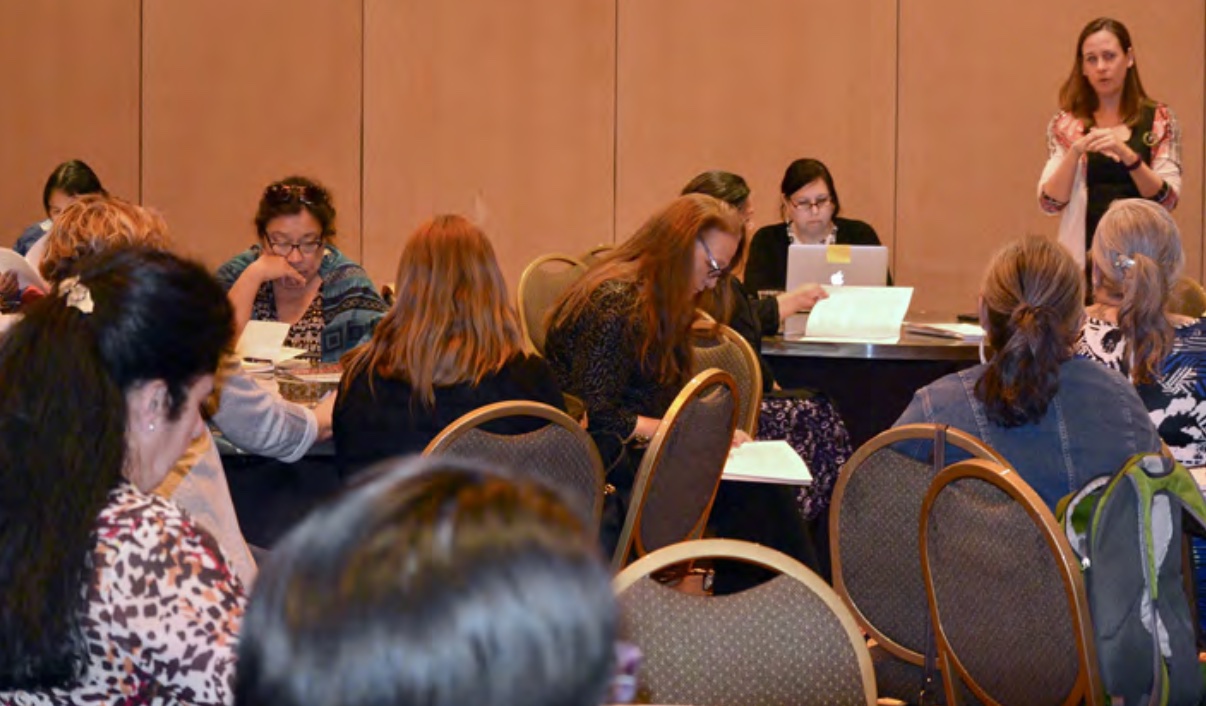
A. General issues and recommendations
- Examine ways to improve public safety funding mechanisms. Currently, base funding for tribal courts, law enforcement, and detention is provided through the BIA and is entirely inadequate. Oftentimes, tribes in PL 280 jurisdictions and similar jurisdictions are completely shut out of this funding. BIA recently released an “unmet obligations” report concluding that there is more than a $2 billion unmet need for tribal law enforcement and courts funding. Additional funding is provided through the Departments of Justice and Health and Human Services under a series of competitive grant programs. Moreover, funding for prevention, rehabilitation, and treatment programs, which are key components of any community’s approach to reducing crime, are located at IHS, SAMHSA, and elsewhere within HHS. In order to obtain this funding, tribes often must compete against each other under the priorities and guidelines set by the administering agency. Ultimately, the tribes that have the financial and human resources to employ experienced grant writers end up receiving funding, while the under-resourced tribes may be left without. Those tribes that do receive funding cannot count on funding continuing beyond the current grant period, and tribal communities have countless stories of successful programs disappearing at the end of a 2- or 3-year grant cycle. Under this ad hoc system, tribal law enforcement will receive vehicles, but no maintenance. They will get a detention facility, but no staff. They will receive radios, but no central dispatch. The Administration should consult with tribes to develop a proposal that would bring much-needed reforms to the tribal public safety funding system to better meet local needs.
- Support the inclusion of tribal governments in the disbursements from the Crime Victims Fund. American Indians and Alaska Natives experience the highest crime victimization rates in the country. Tribal governments, like other governments, are responsible for meeting the needs of victims in their communities. Unfortunately, tribal governments often have few or no resources available to provide services or compensation to victims. Unlike state and territorial governments, Indian tribal governments do not receive an annual allocation from the Crime Victims Fund to help crime victims in their communities. The Administration should include a 5% tribal allocation in its budget request.
- Violation of Protection and Exclusion Orders. Tribes issue protection and exclusion orders to ensure the public safety of their members. In addition to domestic violence protection orders, these have included exclusion orders for individuals who have committed crimes related to drugs and protection orders against non-Natives for stalking and sexual assault offenses. However, tribes have a limited ability to enforce these orders in most cases. The Administration should initiate consultation with tribal governments about options to increase federal penalties and deterrence for Natives and non-Natives who violate tribal exclusion orders and protection orders.
- Address the increase in violence resulting from extractive industries. The escalation of violence due to extractive industries must be addressed by the DOJ. Industries must be held accountable for the resulting violence of itinerant workforces created within tribal communities by these industries. DOJ and DOI should create standards of protection for tribal communities for extractive industries to comply with prior to, during, and post construction to protect Native women and children. DOJ should assist Indian tribes in safeguarding the lives of Native women to avoid the usage of excessive force and violations of civil rights of tribal communities by militarized and state police forces.
B. U.S. Department of Justice
- Department of Justice (DOJ) Grant Funding. For the past several years, the Administration has requested a flexible 7 percent tribal set-aside across Office of Justice Programs (OJP) grant programs. While the set-aside has not been included in congressional appropriations, Congress has given OJP the increased flexibility it requested by appropriating $30 million for “tribal assistance” and directing DOJ to consult with tribes about how this $30 million should be spent. This consultation has never taken place and should happen immediately to allow sufficient planning for the coming year's appropriations.
- OVW Rescission from Tribal Programs. OVW continues to apply congressionally mandated rescissions to the tribal programs—for example, $3.2 million was taken from the Grants to Tribal Governments program last year. It is our understanding that OVW has discretion to determine how to apply the rescission across its funding lines. Because of the unique federal trust responsibility and heightened federal obligations in Indian country, tribal programs should be protected from future rescissions.
C. Bureau of Indian Affairs
- Prioritize taking land into trust in Alaska. Because of the legal status of the land in most Alaska Native Villages, tribal governments in Alaska generally have very limited authority to protect their communities. The Department of Interior has recently issued regulations to allow land to be taken in to trust in Alaska, which has the potential to transform the tools available to Alaskan tribes for ensuring public safety in their communities. The Administration should work swiftly to take land into trust in Alaska.
- Address funding disparities for tribes in Public Law 280 jurisdictions. Indian nations in PL 280 jurisdictions have been provided substantially lower amounts of support from the Bureau of Indian Affairs for tribal law enforcement and tribal courts than Indian nations not subject to PL 280. Consequently, the tribes in PL 280 jurisdictions have had far less opportunity to develop their own police departments and court systems. Beginning in the 1990s, the DOJ has been supplying financial support and technical assistance to Indian nations for development and enhancement of their police departments and court systems. The Bureau of Indian Affairs should request appropriate additional federal funding to end this disparity in funding between tribes depending on their PL 280 status. In addition to the points outlined above, there are four core federal statutes— the Violence Against Women Act (VAWA), the Tribal Law and Order Act (TLOA), the Family Violence Prevention and Services Act (FVPSA), and the Victims of Crime Act (VOCA)—that have the potential to greatly improve safety for Native women. For the promise of these laws and programs to be fully realized, however, they must be fully implemented, which requires sufficient resources for tribal justice systems and ongoing coordination and consultation between various federal agencies and tribal governments. It is critical that the Departments of Justice, Interior, and Health and Human Services take direct and immediate action to ensure full and effective implementation of all provisions of these lifesaving federal laws, particularly those pertaining to the areas outlined below.
Tribal Law Order Act of 2010 Concerns and Recommendations:
1) Federal Accountability
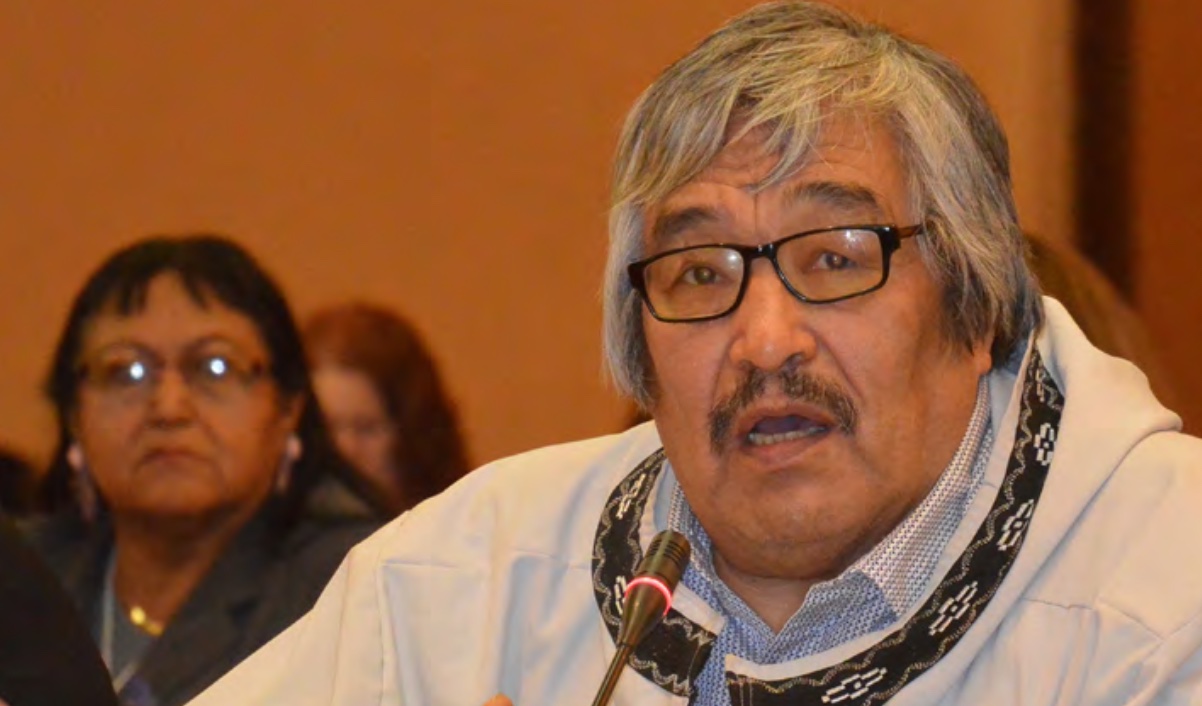
TLOA, Section 201 of the Tribal Law and Order Act of 2010 requires U.S. Attorneys to coordinate with tribal justice officials on the use of evidence when declining to prosecute or refer a reservation crime. Sharing of this type of information is critical to keeping Indian women safe. Tribal officials need to be notified when a U.S. Attorney declines to prosecute sexual assault and domestic violence offenders so that, in the case of an Indian defendant, a tribal prosecution may ensue, or in all other cases, tribes can at least notify the victim of the status of the case so that she may take the necessary steps to protect herself. Many Indian tribes were involved in supporting the Mississippi Band of Choctaw in the U.S. Supreme Court Dollar General case challenging civil jurisdiction of the tribe in a case of sexual assault of a minor tribal member. The case has raised many questions about the failure of the DOJ to prosecute the non-Indian suspect. In addition, the lack of federal coordination in the recent murder of RoyLynn RidesHorse on the Crow Reservation prompted the community to organize a Walk for Justice for RoyLynn RidesHorse.
Recommendation: Hold U.S. Attorneys accountable for necessary coordination and reporting duties with tribal justice officials under the TLOA. The safety of Indian women depends upon it.
2) State Accountability
Section 221 of the TLOA permits Indian tribes who are subject to state jurisdiction under PL 280 to request the U.S. Attorney General to accept federal concurrent criminal jurisdiction on the tribe’s lands. Five tribes have submitted requests to the Attorney General, two of which have been approved and two of which have been denied. The Hoopa Valley Tribe, however, submitted one of the first requests under Section 221 of the TLOA in 2011, and while the Department announced recently the request was approved, the extension will not occur until late 2017.
Recommendations: DOJ should work expeditiously with the Hoopa Valley Tribe to extend federal criminal jurisdiction to the Hoopa Valley Reservation. DOJ should also conduct outreach and sponsor educational trainings with all eligible Indian tribes under TLOA to ensure that tribes are aware of this right and how to exercise it.
3) Enhanced Tribal Sentencing Authority
Section 304 of the TLOA grants tribal courts the ability to sentence offenders for up to 3 years imprisonment for any one offense under tribal criminal law if certain protections are provided. This is a significant improvement, although this maximum sentence still falls short of the average sentence of 4 years for rape in other jurisdictions. Crucial for our purposes, tribes must have the capacity to house the offender in detention facilities that meet federal standards; otherwise, the enhanced sentencing power is meaningless.
Recommendation: Work with Congress to ensure that the Bureau of Prisons Pilot Project is reauthorized.
4) Prisoner Release and Reentry
Section 601 of the TLOA requires the U.S. Bureau of Prisons (BOP) to notify tribal justice officials when a sex offender is released from federal custody into Indian country.
Recommendation: Ensure that tribal justice officials are notified of prisoner release and reentry on Indian lands, regardless of the process by which this occurs (i.e., whether the BOP Director gives notice directly to tribal justice officials or whether he gives notice to the U.S. Attorney and the U.S. Attorney is responsible for relaying that message to tribal justice officials). Proper implementation of this provision is critical to the safety of Indian women.
5) Full Access to Federal Databases
TLOA requires the Attorney General to permit Indian
law enforcement agencies to enter information into and obtain information from federal criminal information databases. The Task Force congratulates DOJ on its efforts to ensure through the Tribal Access Program (TAP) that all tribal law enforcement have NCIC access; however, the Task Force is concerned that not all Indian tribes will have access to the NCIC under the TAP. We understand that the program is currently limited to tribes with a SORNA-compliant sex offender registry or with a tribal law enforcement agency. There are many tribes, particularly in PL 280 jurisdictions and similar jurisdictions, however, that do not meet this criteria, but do have tribal courts that are issuing protection orders. For these protection orders to protect victims, the tribe needs to be able to enter them into the protection order file of NCIC.
Recommendations: Ensure that all tribes have the ability under TAP to access federal databases not only for the purpose of obtaining criminal history information, but also for entering protection orders and other information into the database as well. The Task Force also recommends that the DOJ host trainings for tribal judges and law enforcement to educate each about the gaps in the current system
and how to facilitate better coordination to ensure that lifesaving protection orders get entered into the NCIC database. Finally, the Task Force recommends that DOJ create a task force to identify the outstanding barriers tribes face in acquiring full access to federal criminal history databases and to develop a plan of action to resolve these issues.
These are just some of the provisions within the TLOA that will help protect the safety of Native women. The NCAI Task Force on Violence Against Women encourages the Department of Justice to fully implement all facets of TLOA and to take measures to ensure that Congress adequately funds these and other critical public safety programs in Indian country.
Violence Against Women Act 2013 Reauthorization
The inclusion of a tribal title, the Safety for Indian Women title, within the Violence Against Women Act of 2005 and 2013 were historic achievements. VAWA 2005 clarified that the unique legal relationship of the United States to Indian tribes creates a federal trust responsibility to assist tribal governments in safeguarding the lives of Indian women. The NCAI Task Force recommends that the Department of Justice—in order to better fulfill its mission to protect the safety of Indian women—address the following issues and coordinate with Indian tribes regarding implementation of the proposed recommendations.
1) Tribal Jurisdiction Over Non-Indian Offenders
The lack of tribal jurisdiction over non-Indian offenders on Indian lands continues to be a key reason for the perpetuation of disproportionate violence against American Indian and Alaska Native women. VAWA 2013 addressed this issue for certain crimes of domestic violence, dating violence, and protection order violations for some tribes. Many crimes of violence against Native women and children continue to fall through the cracks and many tribes, particularly those in Alaska and in states with restrictive settlement acts such as Maine, are not able to make use of this provision. For those tribes that are implementing the jurisdiction provision of VAWA 2013, funding and resources are a significant problem. Concerns have also been raised about how health care costs will be covered for non-Indian inmates who are sentenced in tribal courts.
Recommendations:
- Broaden and restore tribal criminal jurisdiction over non-Indian perpetrators of domestic violence, sexual assault, dating violence, and stalking that commit said crimes to all federally recognized Indian tribes.
- For Indian tribes unable to utilize the VAWA 2013 SDVCJ establish a pilot project under which tribal criminal jurisdiction over non-Indian perpetrators of domestic violence, sexual assault, dating violence, and stalking can be implemented.
- Increase funding to support implementation of VAWA 2013.
- Establish a federal workgroup to identify options for covering health care costs for non-Indians sentenced in tribal courts.
2) Enforcement of Federal Statutes Across Indian Tribes
Enforcement of the federal firearms provision and habitual offender statute is of concern particularly in tribal jurisdictions where tribes share concurrent jurisdiction with state governments such as under PL 280, Indian tribes impacted by restrictive settlement acts, and Alaska.
Recommendation: DOJ increase training to districts with Indian tribes where these federal statutes are not being charged and coordinate with Indian tribes to increase utilization of the statutes.
